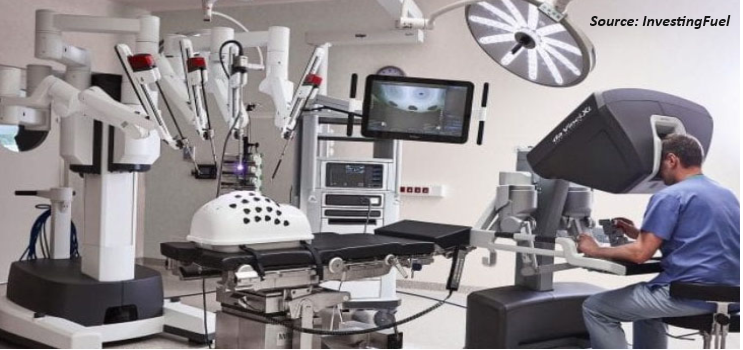Emerging and Advanced Technologies Shape Regenerative Medicine Landscape
17-Sep-2024

Introduction
Regenerative medicine stands at the forefront of healthcare innovation, offering promising solutions for treating a wide array of diseases and injuries. This rapidly evolving field harnesses the body's natural healing mechanisms to repair, replace, or regenerate damaged cells, tissues, or organs. With advancements in technology and growing research initiatives, regenerative medicine is poised to transform healthcare paradigms, offering hope to millions worldwide.
The regenerative medicine industry is experiencing unprecedented growth, driven by increasing investments, technological advancements, and a growing demand for personalized treatments. According to the report published by Next Move Strategy Consulting, the global regenerative medicine market is projected to reach USD 95.48 billion by 2030 with a CAGR of 17.9% from 2024 to 2030, fueled by advancements in stem cell therapy, tissue engineering, gene editing, and biomaterials.
Emerging and Advanced Technologies
Stem Cell Therapy: Stem cells have the remarkable ability to differentiate into various cell types, making them invaluable in regenerative medicine. Emerging techniques in stem cell research, such as induced pluripotent stem cells (iPSCs) and mesenchymal stem cells (MSCs), offer new avenues for therapeutic applications, ranging from tissue regeneration to immunomodulation. In 2023, the California Institute for Regenerative Medicine (CIRM) reaffirmed its dedication to cellular medicine by allocating USD 89 million for stem cell and gene therapy research. With a total funding of over USD 5.5 billion and 150 ongoing stem cell initiatives, CIRM further fortified its commitment with an additional USD 10 million to establish the California Cell and Gene Therapy Manufacturing Network, enhancing the state's capabilities in regenerative medicine. These investments underscore CIRM's relentless pursuit of advancing cutting-edge therapies in the field.
Gene Editing (CRISPR-Cas9): CRISPR-Cas9 technology has revolutionized gene editing, enabling precise modifications to the genome with unprecedented accuracy. In regenerative medicine, CRISPR-based therapies hold promise for correcting genetic mutations underlying inherited disorders and optimizing cellular functions for therapeutic purposes. Recently, the Food and Drug Administration (FDA) assessed the initial CRISPR gene editing therapy for severe sickle cell disease, presenting a promising possibility for a cure. Traditional treatments like transplants entail risks and face challenges in finding suitable donors. The proposed exa-cel treatment modifies the patient's stem cells through CRISPR, targeting the genetic abnormalities responsible for sickle cell disease, showing encouraging safety profiles and advantages in preliminary company investigations. Seeking impartial guidance, the FDA's evaluation signifies a potential milestone in approving the first-ever CRISPR-based treatment.
Tissue Engineering: Tissue engineering combines principles of biology, engineering, and materials science to create functional tissues and organs for transplantation. Advanced biomaterials and 3D bioprinting technologies allow researchers to fabricate intricate tissue structures, mimicking native tissues' properties and functions. For example, 3D Systems launched a regenerative tissue program to advance personalized surgical reconstruction with bioprinted human tissue platforms, initially targeting soft tissue applications. Leveraging virtual surgical planning (VSP) tools and expertise in patient-specific medical implants, the initiative aims to develop innovative autologous reconstruction solutions, starting with patient-specific regenerative breast tissue (RBT). This initiative signifies progress in tissue engineering, providing tailored solutions for surgical requirements.
Biomaterials and Scaffolds: Biomaterials play a crucial role in supporting cellular growth and tissue regeneration. Innovations in biomaterial design, including biodegradable polymers, hydrogels, and nanomaterials, provide scaffolds for cellular attachment, proliferation, and differentiation in regenerative medicine applications. According to the Institute for Bioengineering of Catalonia, the biomaterials for regenerative therapies gained global acclaim for their breakthroughs in biomaterials and nanoparticles, particularly in 3D bioprinting for regenerative therapies. The researchers are recognized for their innovative use of 3D bioprinting to simulate breast cancer tumors using pig tissue, showcasing a remarkable advancement in regenerative medicine and tissue engineering.
Conclusion
In conclusion, regenerative medicine stands as a beacon of hope in healthcare, propelled by investments, technological breakthroughs, and innovative initiatives. Stem cell therapy, gene editing, tissue engineering, and biomaterials are pivotal in advancing the field. Notably, investments by entities such as CIRM and the emergence of CRISPR-based therapies represent significant milestones. The strides made in tissue engineering, exemplified by initiatives such as 3D Systems' regenerative tissue program, showcase the field's potential. Collectively, these advancements underscore a shared commitment to transforming healthcare and enhancing patient outcomes on a global scale.
About the Author
 Shyam Gupta is a passionate and highly enthusiastic researcher with over four years of experience. He is dedicated to assisting clients in overcoming challenging business obstacles by providing actionable insights through exhaustive research. Shyam has a keen interest in a variety of industries, including life sciences & healthcare and ICT & Media and he consistently endeavors to deliver valuable perspectives in these areas. In addition to his research work, Shyam enjoys sharing his thoughts and ideas through articles and blogs. During his leisure time, he finds solace in the world of literature and art, often engrossed in reading and expressing his creativity through painting. The author can be reached at info@nextmsc.com
Shyam Gupta is a passionate and highly enthusiastic researcher with over four years of experience. He is dedicated to assisting clients in overcoming challenging business obstacles by providing actionable insights through exhaustive research. Shyam has a keen interest in a variety of industries, including life sciences & healthcare and ICT & Media and he consistently endeavors to deliver valuable perspectives in these areas. In addition to his research work, Shyam enjoys sharing his thoughts and ideas through articles and blogs. During his leisure time, he finds solace in the world of literature and art, often engrossed in reading and expressing his creativity through painting. The author can be reached at info@nextmsc.com
Add Comment
Related Blogs
Next-Gen Protections: Exploring Future Technologies in Healthcare Security
Introduction In the recent years, the healthcare industry h...
Revolutionizing Healthcare: Advancements and Trends in Medical Robotics
Introduction In the ever-evolving landscape of healthcare...









